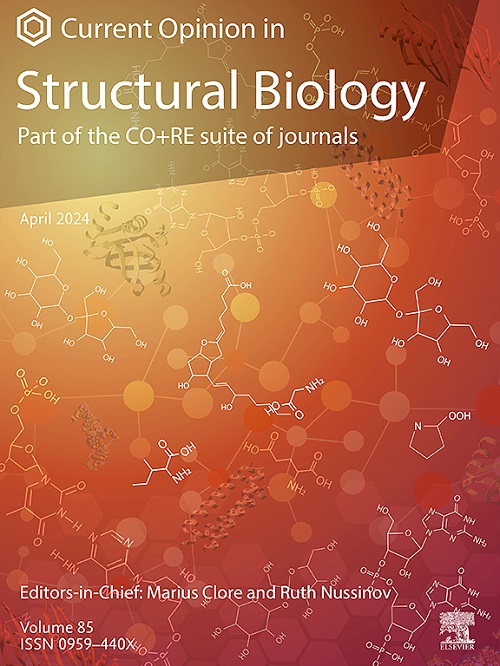可视化糖蛋白动力学的实验和计算方法的协同作用:在糖蛋白构象集合的明显无序中探索秩序
IF 6.1
2区 生物学
Q1 BIOCHEMISTRY & MOLECULAR BIOLOGY
引用次数: 0
摘要
了解糖蛋白的动态行为是破译其生物学作用的关键。这篇综述探讨了实验和计算方法的协同使用,以解决这一复杂的挑战。聚糖由于其固有的灵活性和结构多样性,对传统的结构分析构成了很大的障碍。创新的实验技术提供了有价值的聚糖构象快照,但往往缺乏生理环境的背景。计算模拟提供了原子级别的细节,并探索了动态运动的全部范围,但需要大量的资源和验证。通过使用实验数据来完善和验证计算模型,整合这些方法对于准确捕获聚糖和蛋白质之间复杂的相互作用至关重要。这种联合策略有望解开对糖蛋白功能的更深层次的理解,并为新疗法的设计提供信息。本文章由计算机程序翻译,如有差异,请以英文原文为准。
The synergy of experimental and computational approaches for visualizing glycoprotein dynamics: Exploring order within the apparent disorder of glycan conformational ensembles
Understanding the dynamic behavior of glycoproteins is crucial for deciphering their biological roles. This review explores the synergistic use of experimental and computational methods to address this complex challenge. Glycans, with their inherent flexibility and structural diversity, pose significant obstacles to traditional structural analysis. Innovative experimental techniques offer valuable snapshots of glycan conformations, but often lack the context of a physiological environment. Computational simulations provide atomic-level detail and explore the full range of dynamic motions, but require extensive resources and validation. Integrating these approaches, by using experimental data to refine and validate computational models, is essential for accurately capturing the complex interplay between glycans and proteins. This combined strategy promises to unlock a deeper understanding of glycoprotein function and inform the design of novel therapeutics.
求助全文
通过发布文献求助,成功后即可免费获取论文全文。
去求助
来源期刊

Current opinion in structural biology
生物-生化与分子生物学
CiteScore
12.20
自引率
2.90%
发文量
179
审稿时长
6-12 weeks
期刊介绍:
Current Opinion in Structural Biology (COSB) aims to stimulate scientifically grounded, interdisciplinary, multi-scale debate and exchange of ideas. It contains polished, concise and timely reviews and opinions, with particular emphasis on those articles published in the past two years. In addition to describing recent trends, the authors are encouraged to give their subjective opinion of the topics discussed.
In COSB, we help the reader by providing in a systematic manner:
1. The views of experts on current advances in their field in a clear and readable form.
2. Evaluations of the most interesting papers, annotated by experts, from the great wealth of original publications.
[...]
The subject of Structural Biology is divided into twelve themed sections, each of which is reviewed once a year. Each issue contains two sections, and the amount of space devoted to each section is related to its importance.
-Folding and Binding-
Nucleic acids and their protein complexes-
Macromolecular Machines-
Theory and Simulation-
Sequences and Topology-
New constructs and expression of proteins-
Membranes-
Engineering and Design-
Carbohydrate-protein interactions and glycosylation-
Biophysical and molecular biological methods-
Multi-protein assemblies in signalling-
Catalysis and Regulation
 求助内容:
求助内容: 应助结果提醒方式:
应助结果提醒方式:


